EXPLORE THE BIRTHPLACE OF THE ORIGINAL BIBIMBAP
t seems that everywhere in South Korea is famous for something.
If you love Korean bibimbap (a kind of fried rice with mixed toppings) Jeonju is the place to be!
It’s so famous that even when you tell a local Korean you’ve been to Jeonju, the first thing they do is: one, be surprised that you’ve actually gone to Jeonju and two, ask if you ate Jeonju Bibimbap.
But there’s more to share about Jeonju than just some good eating. Here we’ll explore all there is to eat, see and do in this culinary rich town – all in 48 hours!
About Jeonju
Jeonju holds a special place in South Korea’s history spanning over a thousand years and was the major centre for many significant historical events to happen in the country.
Long ago, it was the capital of the Baekje kingdom – one of the Three Kingdoms of Korea before it was unified into a single united Korean identity. It was also in Jeonju that the Joseon dynasty was founded as the Royal family who originated the period were from Jeonju. Today, many key historical sites within the town’s hanok village have close ties to the founder of the Joseon Dynasty, Yi Seong-gye (also called King Taejo), and are still preserved in memory of his legacy.
Jeonju is also at the heart of the country’s cultural scene showcasing South Korea’s artistic and cultural talent in both cuisine and the arts.
In fact, Jeonju is a UNESCO “City of Gastronomy” recognising the city’s long history and “wealth of traditional home cooking handed down from generation to generation over thousands of years, its active public and private food research, a system of nurturing talented chefs, and its hosting of distinctive local food festivals.”
It also hosts its own successful international film festival called the JEONJU International Film Festival (JIFF) dedicated to alternative and independent films worldwide.
Often, Jeonju is labeled a “Slow City” to recognise its efforts to preserve traditions and nature and with its impressive reputation as a South Korea’s cultural and historical hub, exploring Jeonju is a unique visit that bridges the present with the past.
Where to Eat The best Jeonju Bibimbap
efinitely a recommended eating spot for Jeonju Bibimbap is at a place called Gajok Hwegwan (가족 회관), one of the first bibimbap restaurants to open!
As advertised on their giant billboard sign, just looking at their house bibimbap was a feast for the eyes!
It not only looked amazing garnished generously and prepared with a rainbow of
toppings, but you can really taste the freshness of the vegetables used in each bite.
For us, however, the real surprise came with the gorgeously prepared spread of banchan (side dishes) that accompanied the meal. It came in waves, one after another, until it filled the entire table with the smell of good home cooking. Needless to say, we were very satisfied hungry travelers and at around $12 per person, it was well worth seeking this place out!
What to see and do in Jeonju
eonju is still a modern small town, but as a town built on such a rich history, it’s worth checking out the more historical sights around town.
The good thing is because of its small size, all the touristy things are a hop, skip and a jump from each other – very convenient.
1. START AT JEONDONG CATHOLIC CHURCH
eonju has a bit of a dark religious history of Catholic and Confusion beliefs. The Jeondong Catholic Church was constructed in tribute to Roman Catholic martyrs during the Joseon Dynasty.
If you are keen to learn more about it you can also visit the Confucian school as well as Martyr Mountain where they began burying the martyrs on the site, but I just enjoyed quietly admiring the church’s stained glass windows and architecture.

2. The Royals at Gyeonggijeon Shrine
f you enjoy history the Gyeonggijeon Shrine acts as a historical exhibition about King Tae-jo, the founder of the Joseon Dynasty, and is also a museum about the royal life during the era.
Although it was a little scarce of people due to the winter season, the site was very
pleasant to just wander around as it has a few nature paths amongst the trees and through the bamboo grove. Make sure you take some time to admire the traditional shrine architecture and paintings!

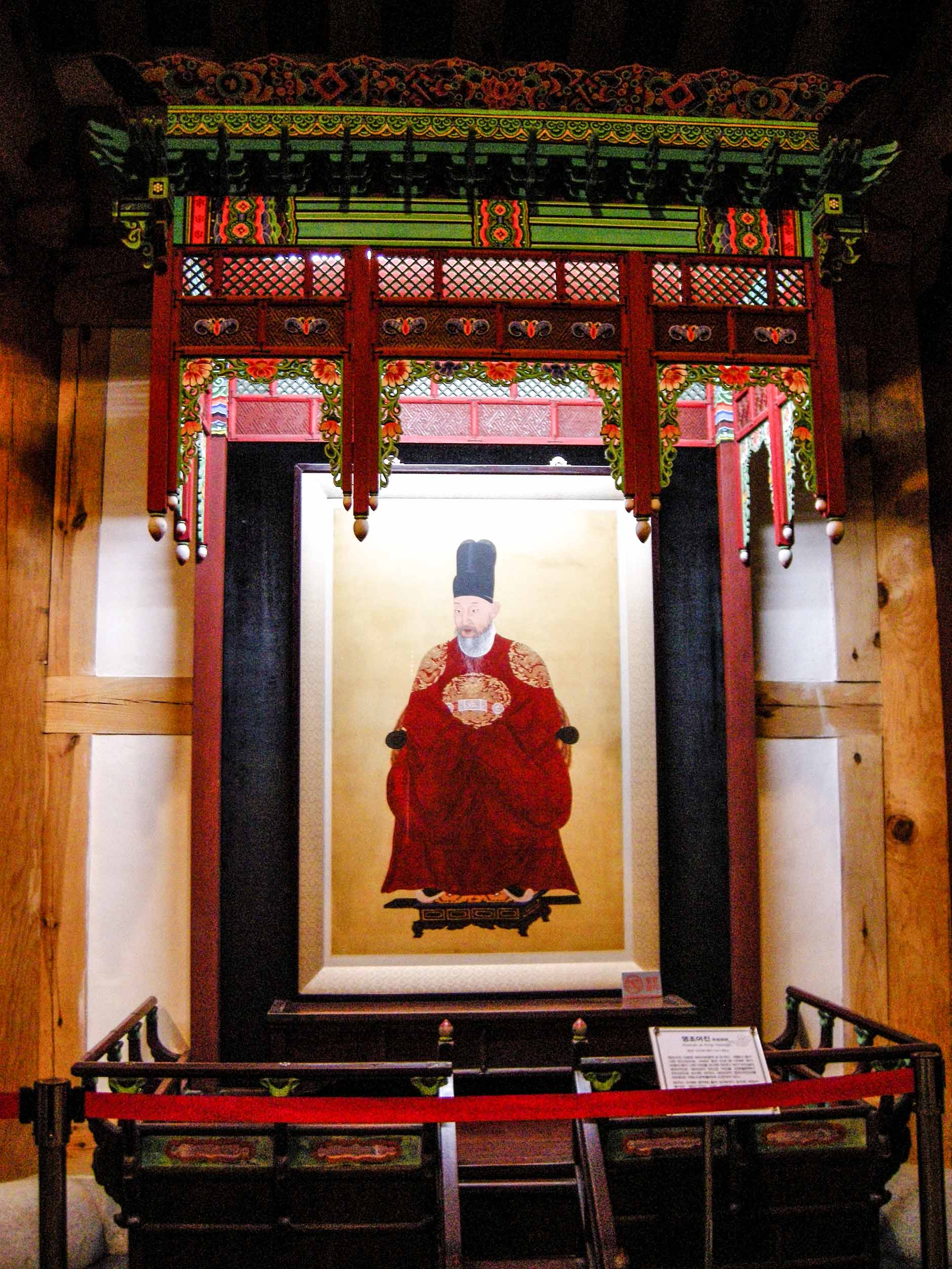
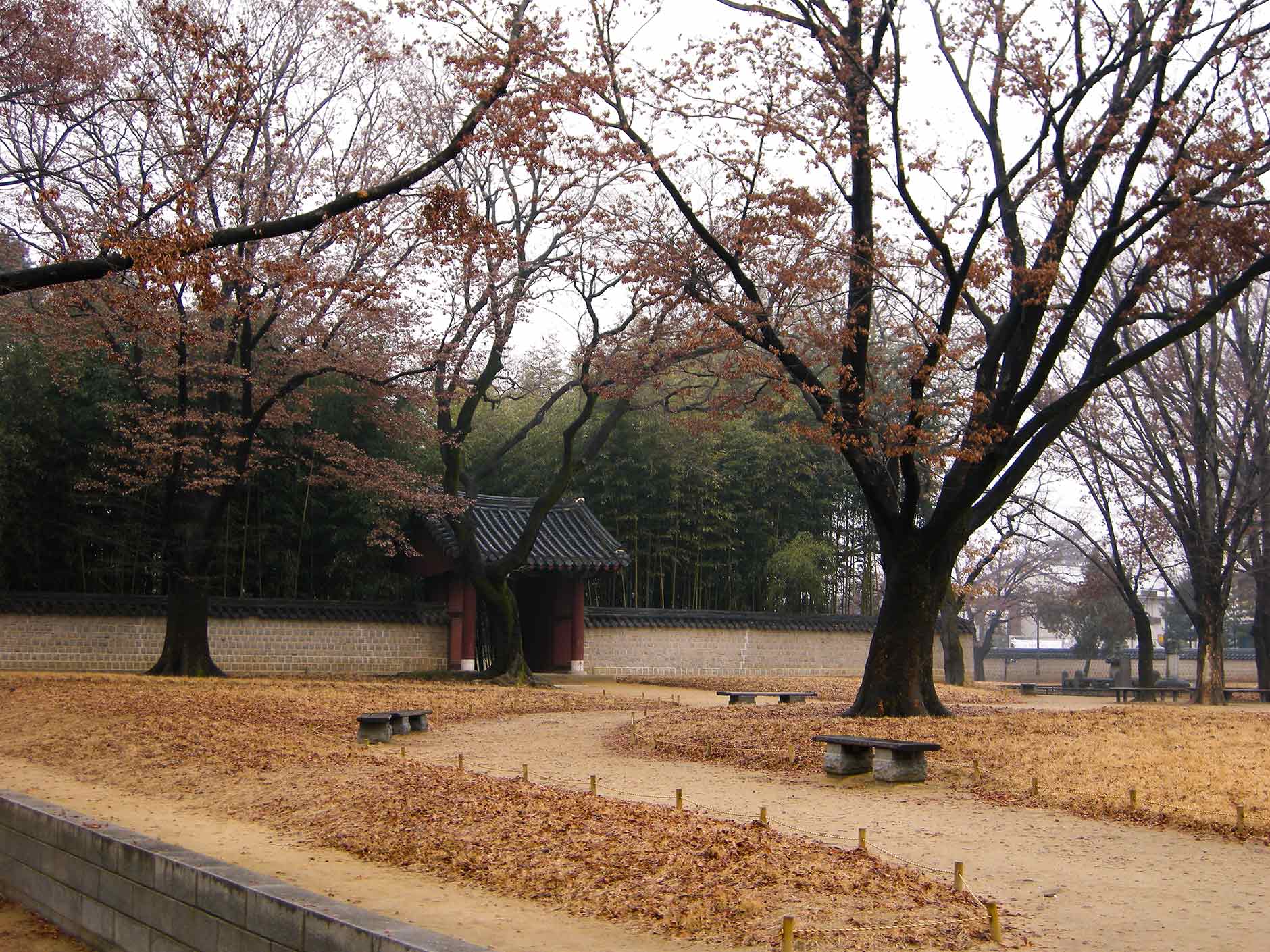
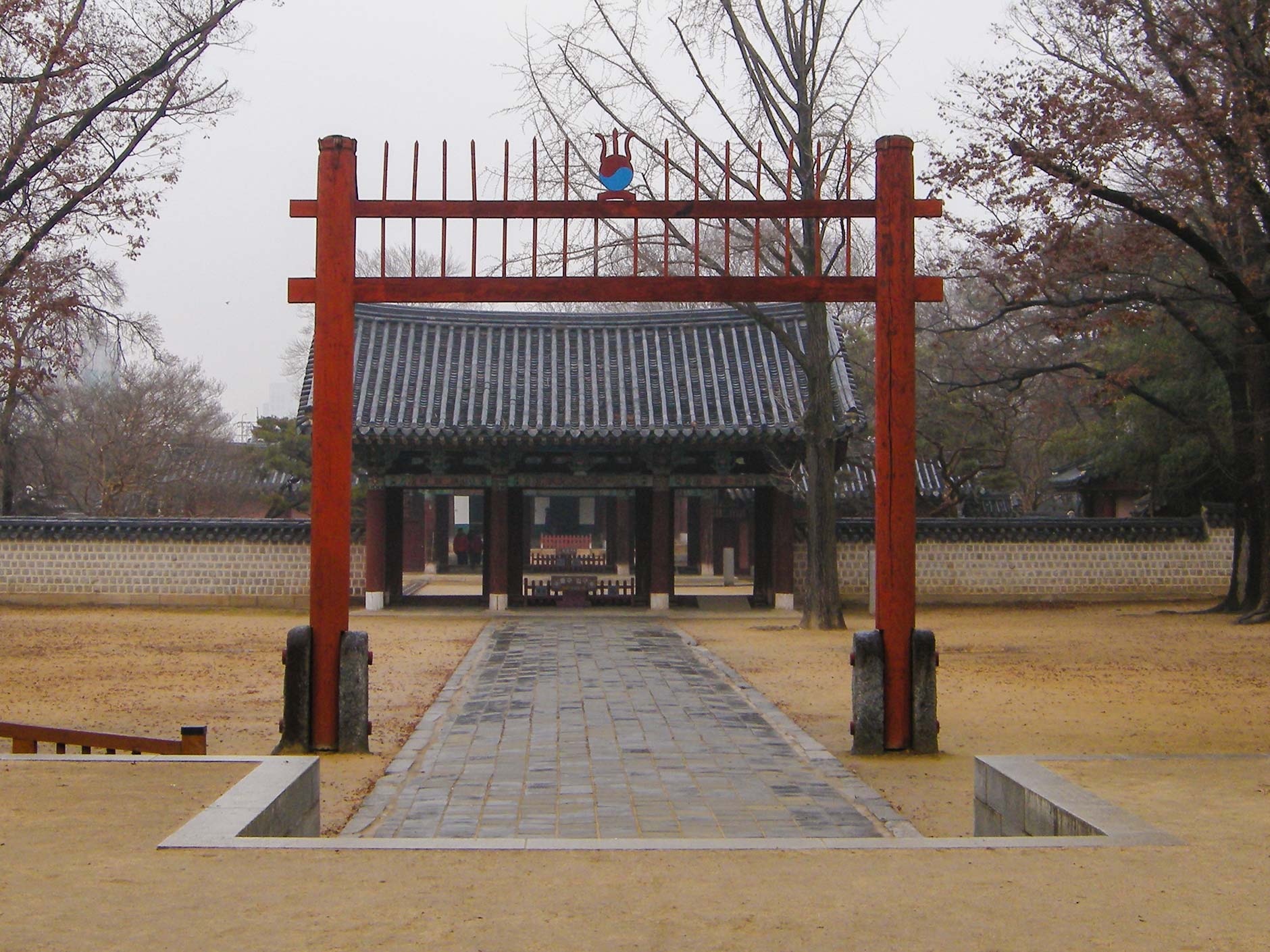


3. Jeonju Hanok Village
uite possibly its most famous attraction, Jeonju’s Hanok Village is located near the heart of the city. It’s pretty huge with around 800 traditional hanok style buildings and despite the fact it began to rain a bit, it was very peaceful to just walk through the cobblestone streets, looking at the houses.
Although Hanok style houses are generally private guesthouses, some are open to public access where you can play traditional games such as ring toss or experience a
small slice of the past in the inner courtyard.
Within the village, you can find many activity centres like traditional tea houses, museums, restaurants, and general shops all with unique exteriors. The highlights for us were learning the process of making Soju at the Wine Museum, seeing the amazement of paper at the Jeonju Traditional Hanji Center, and looking at cure oddities in The Oriental Medicine Culture Center.

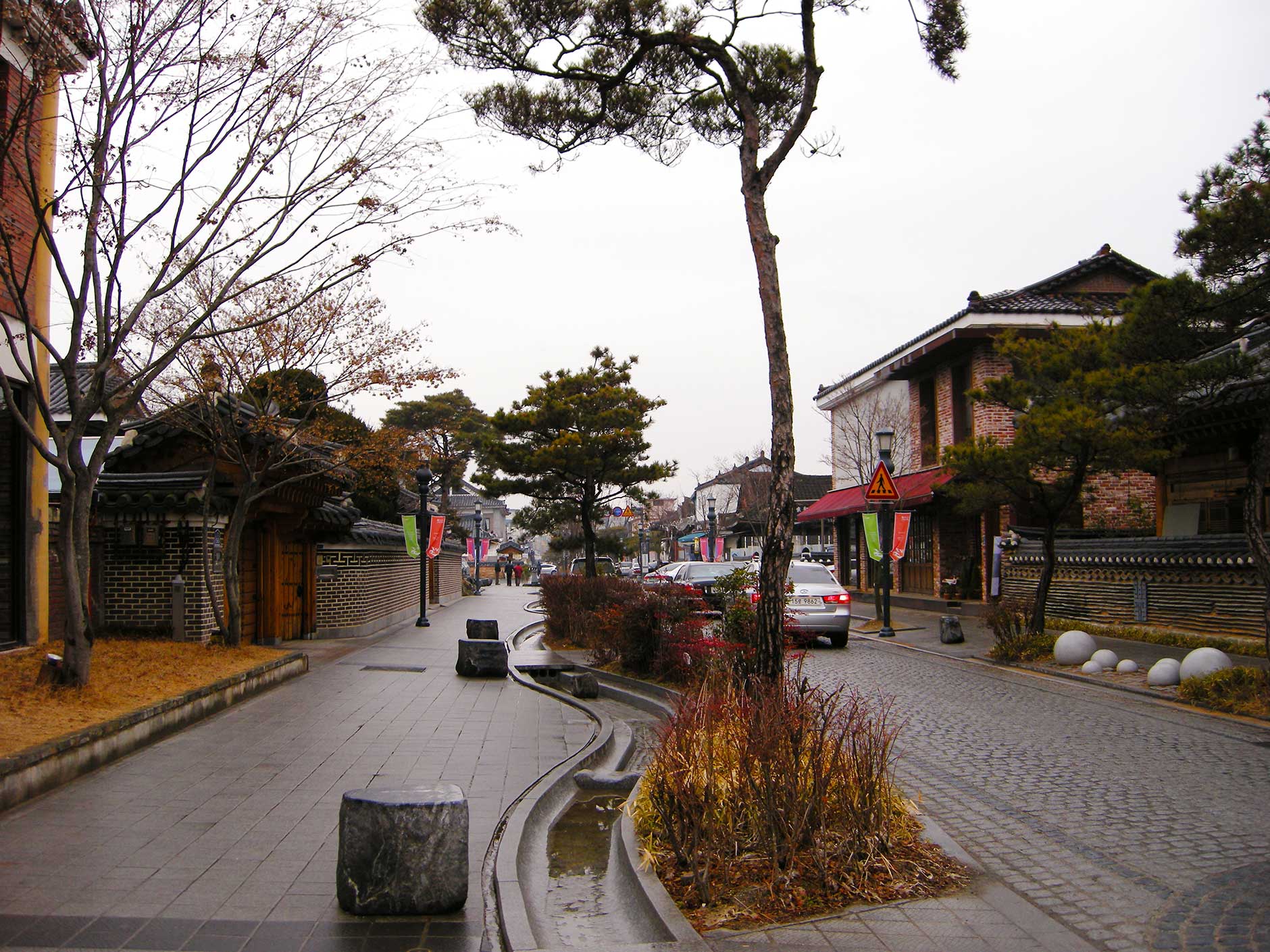

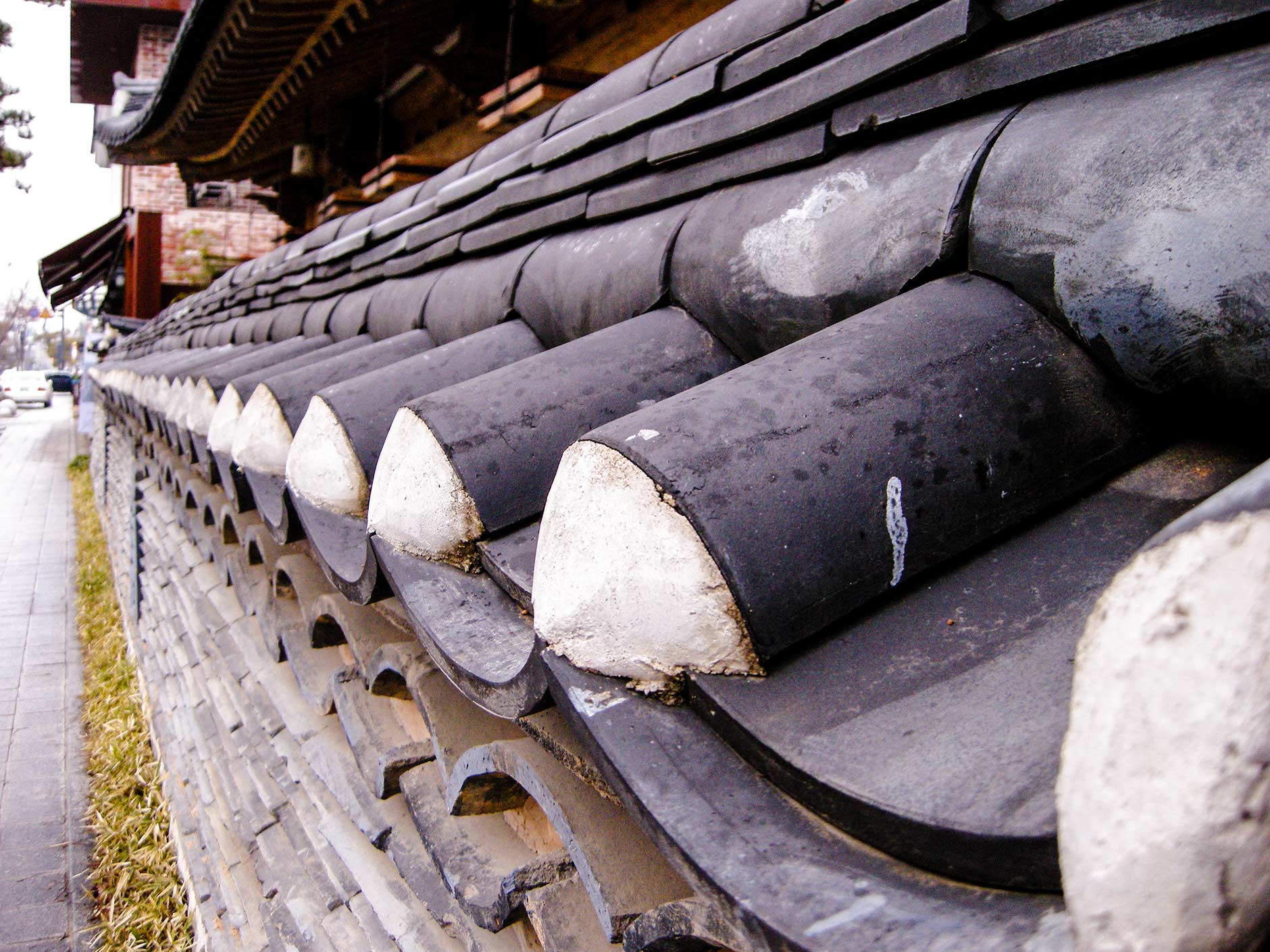
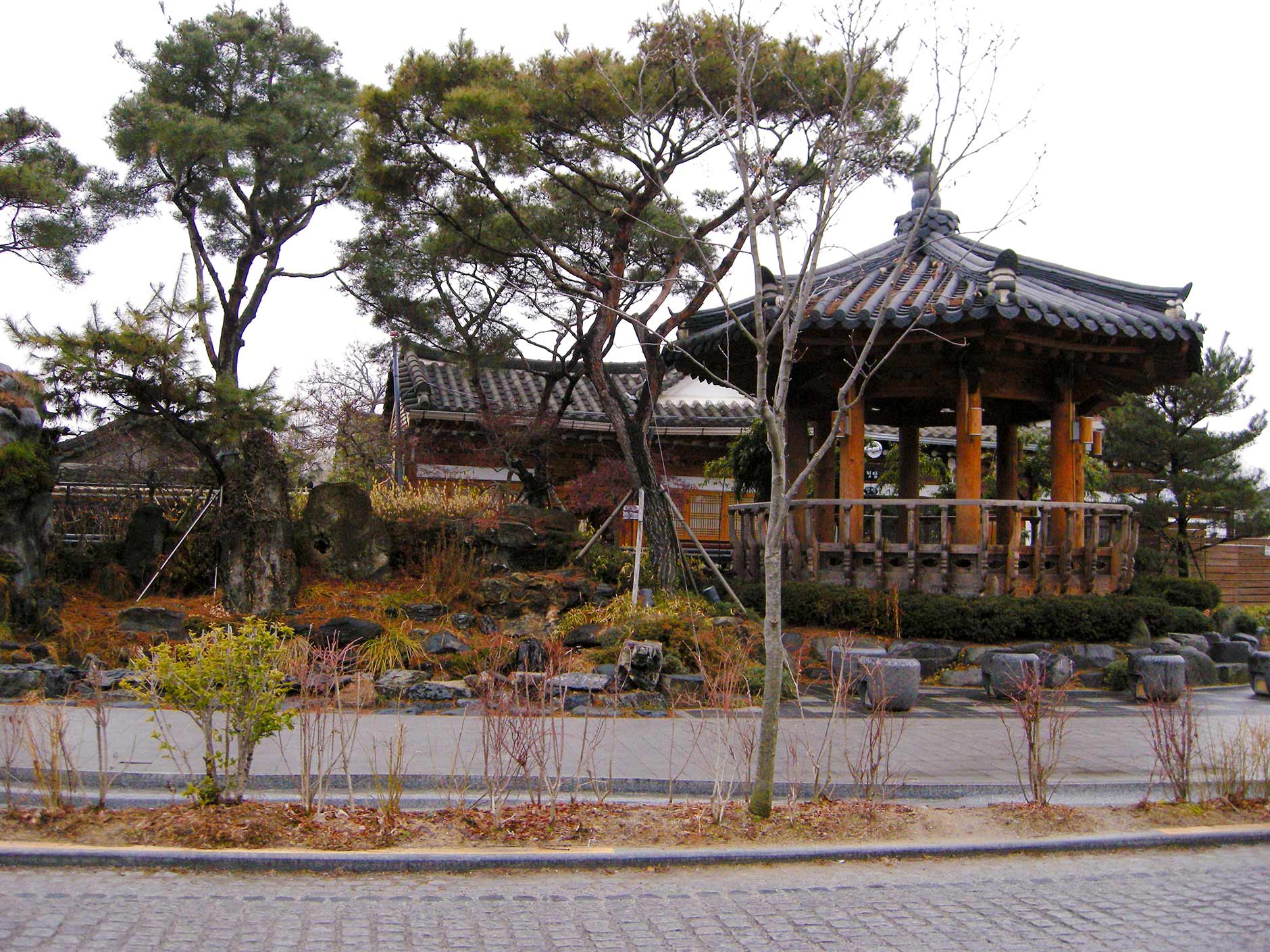
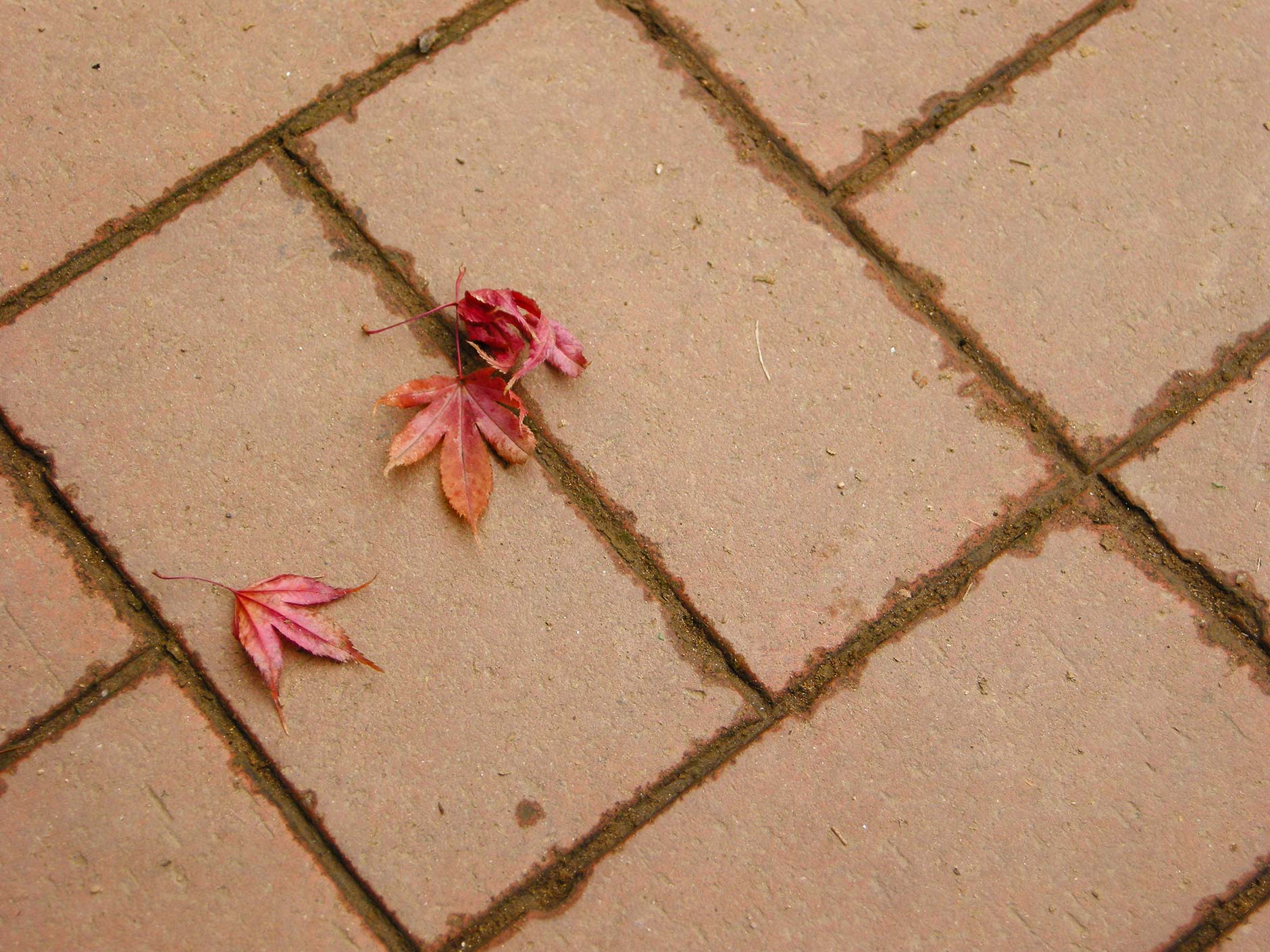

Two sets of games in a Hanok courtyard. And it ALWAYS involves precision hand-eye coordination! I suck at these games!

Me failing at the arrow toss game
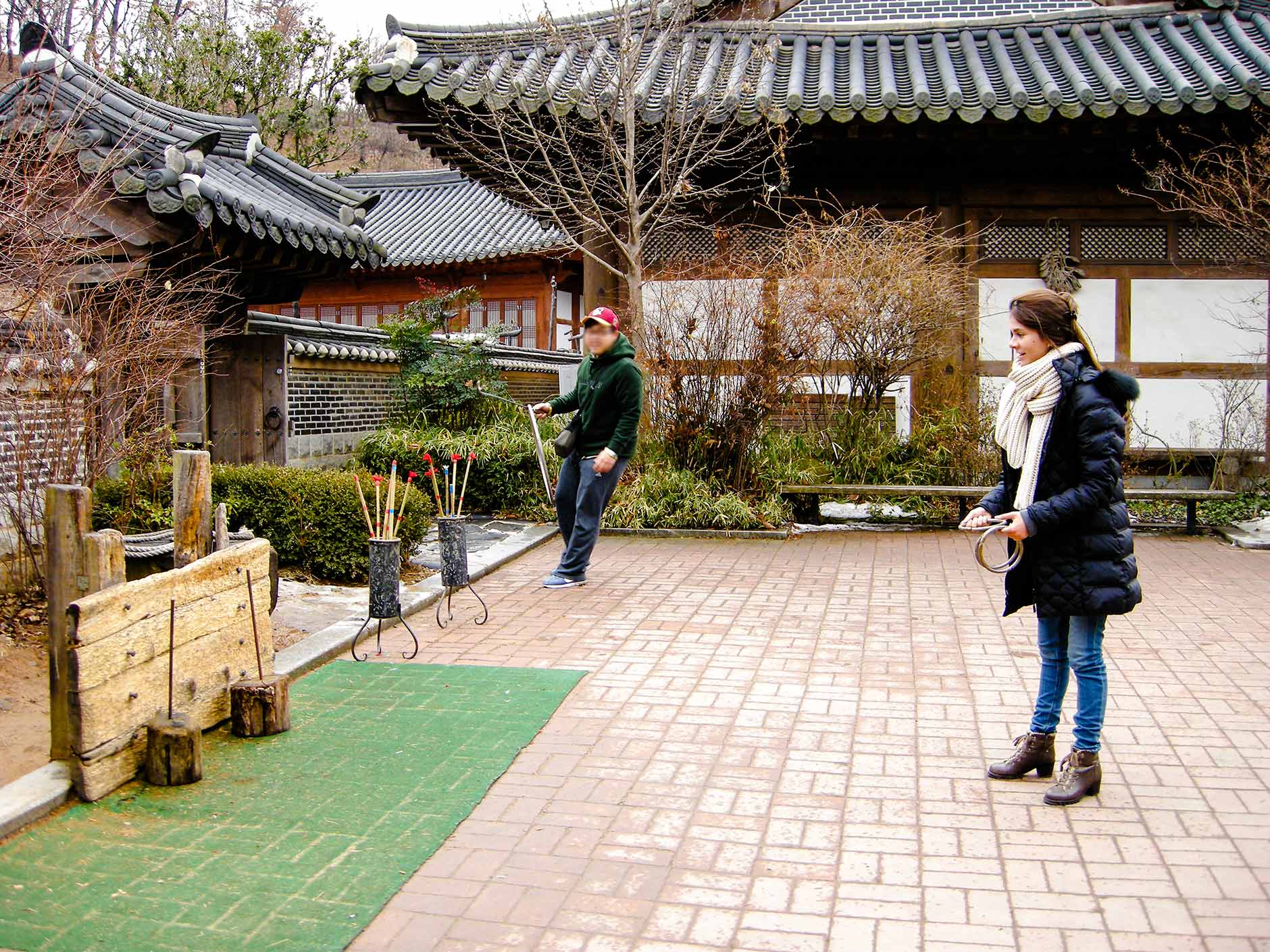
Talyssa playing the ring toss game. These metal rings are really heavy!
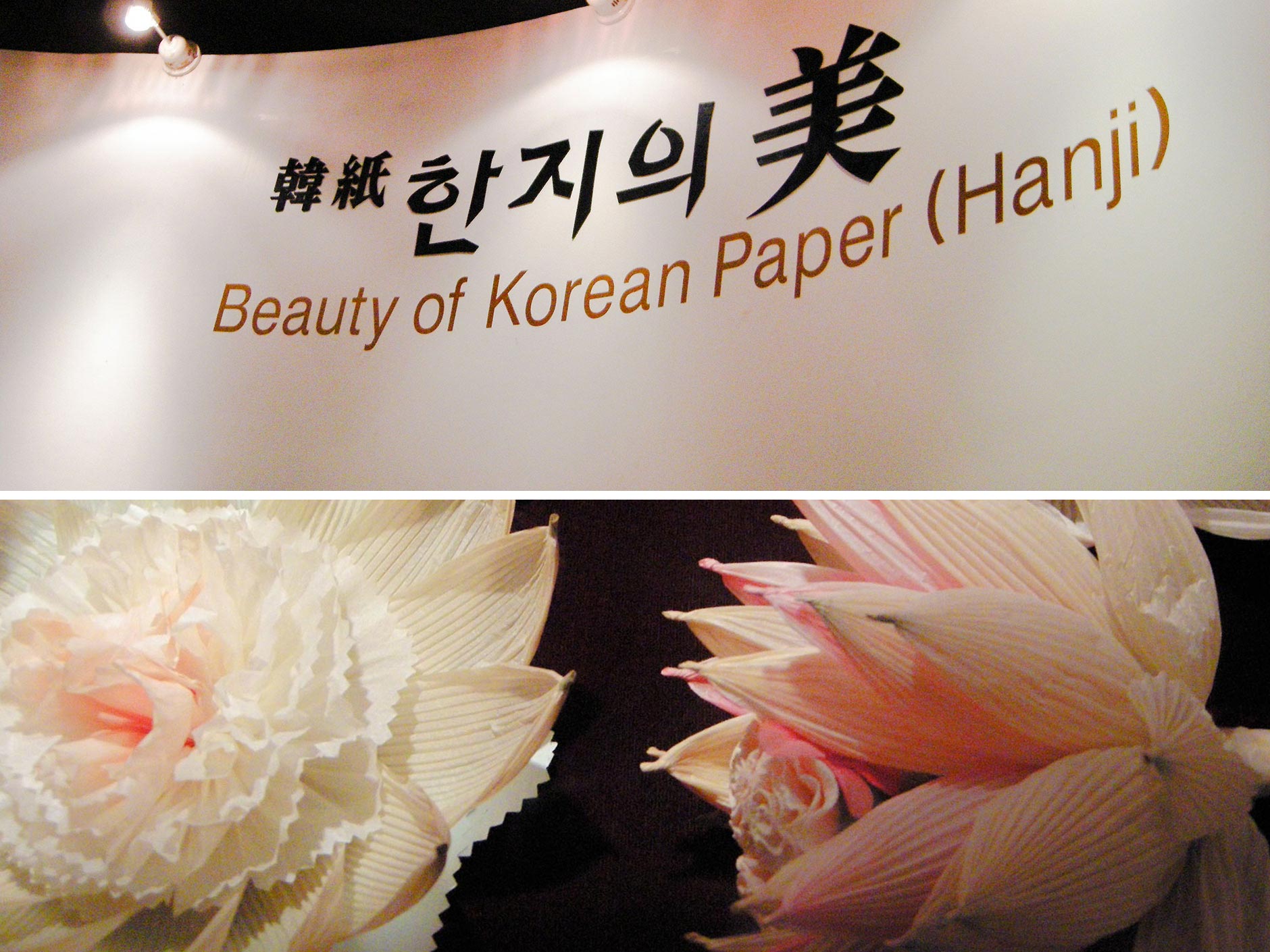

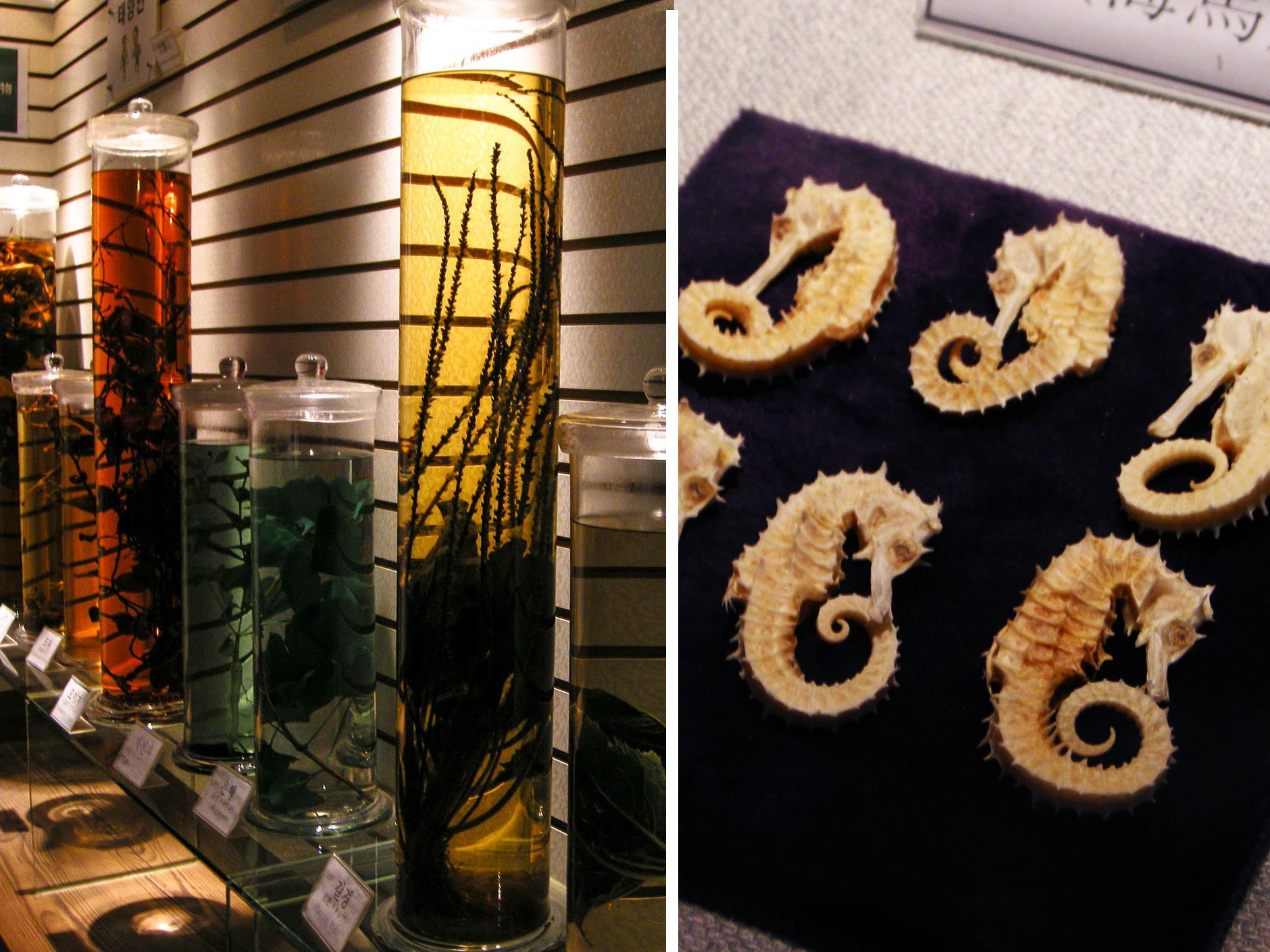
Multicoloured jars of herb at The Oriental Medicine Culture Center

4. A VIEW FROM THE TOP AT OMOKDAE
great way to finish off exploring the Hanok Village is a walk to the Omokdae pavilion. It’s a small hike but definitely refreshing and the reward is a complete view of the Hanok Village and business district of Jeonju.
Omokdae is where Lee Seong-gye and his men celebrated winning against the Japanese invaders who dominated Mount Hwangsan in the Namwon Unbong area and marked the founding of the Joseon dynasty.
JEONJU’s Instaworthy cafes
lthough the Jeonju Hanok Village is established to showcase the best of traditional Korean life and culture, we weren’t expecting the good quality and stylish cafes also present in the area!
Some cafes are actually quite contemporary with large glass windows and concrete floors but somehow they just fit in with the rest of the scenery. If you happen to
come across these little gems definitely give them a visit and step out of the past for a little bit to enjoy a short coffee break in the present day.
The two that stood out for us was the European inspired Blue Pekoe and the art meets coffee space, THE ORCHARD.
Blue Pekoe
his cafe was definitely one of our favourites during our visit. It’s called Blue Pekoe and has a French Provincial theme inside and out!
It was incredibly charming to sit inside and enjoy the traditional view
outside. In addition, all their tea is served using real bone china tea sets like Wedgewood and Royal Alfred. The drinking experience was a real treat as these cups can cost $80 and up!

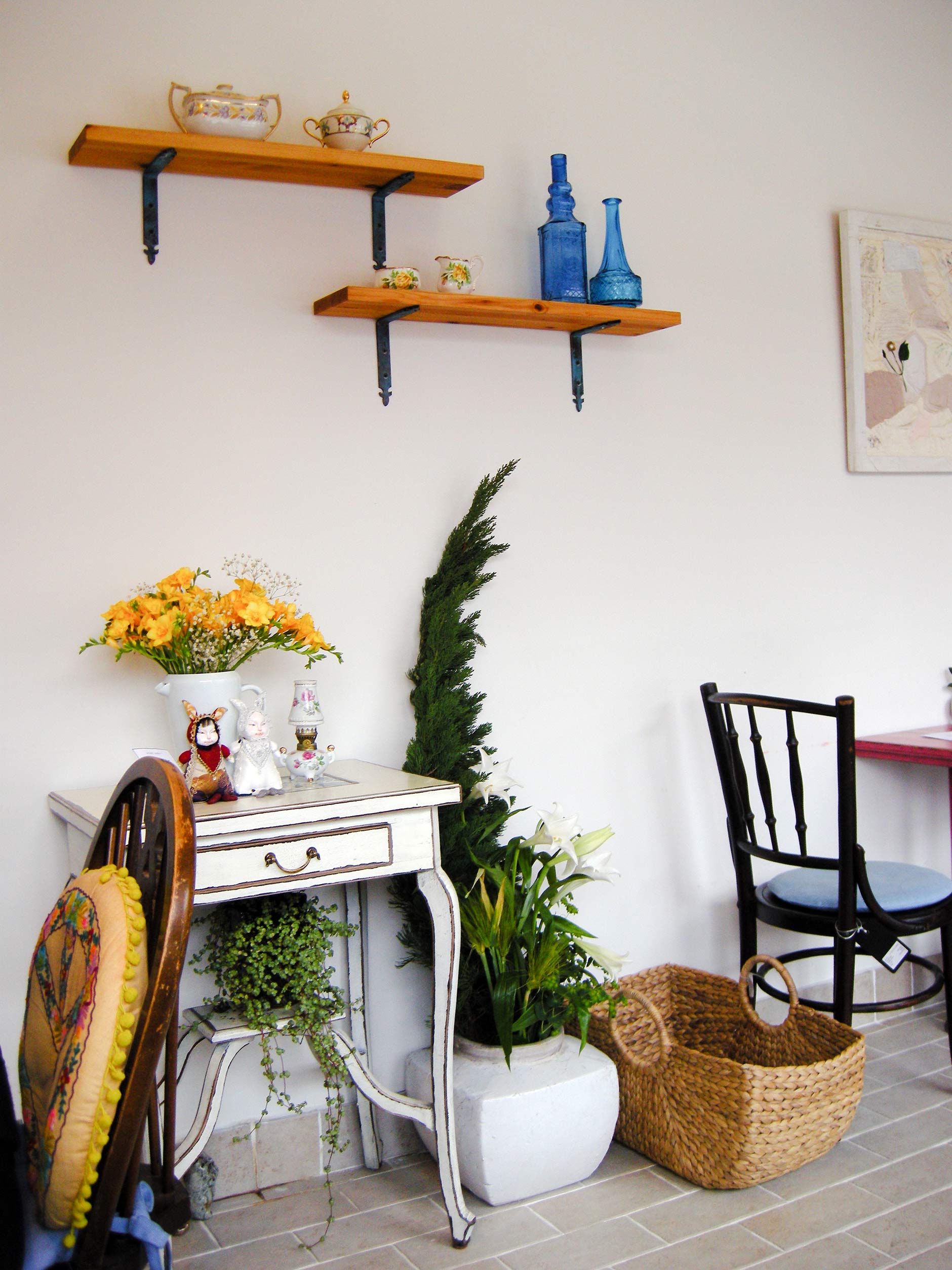

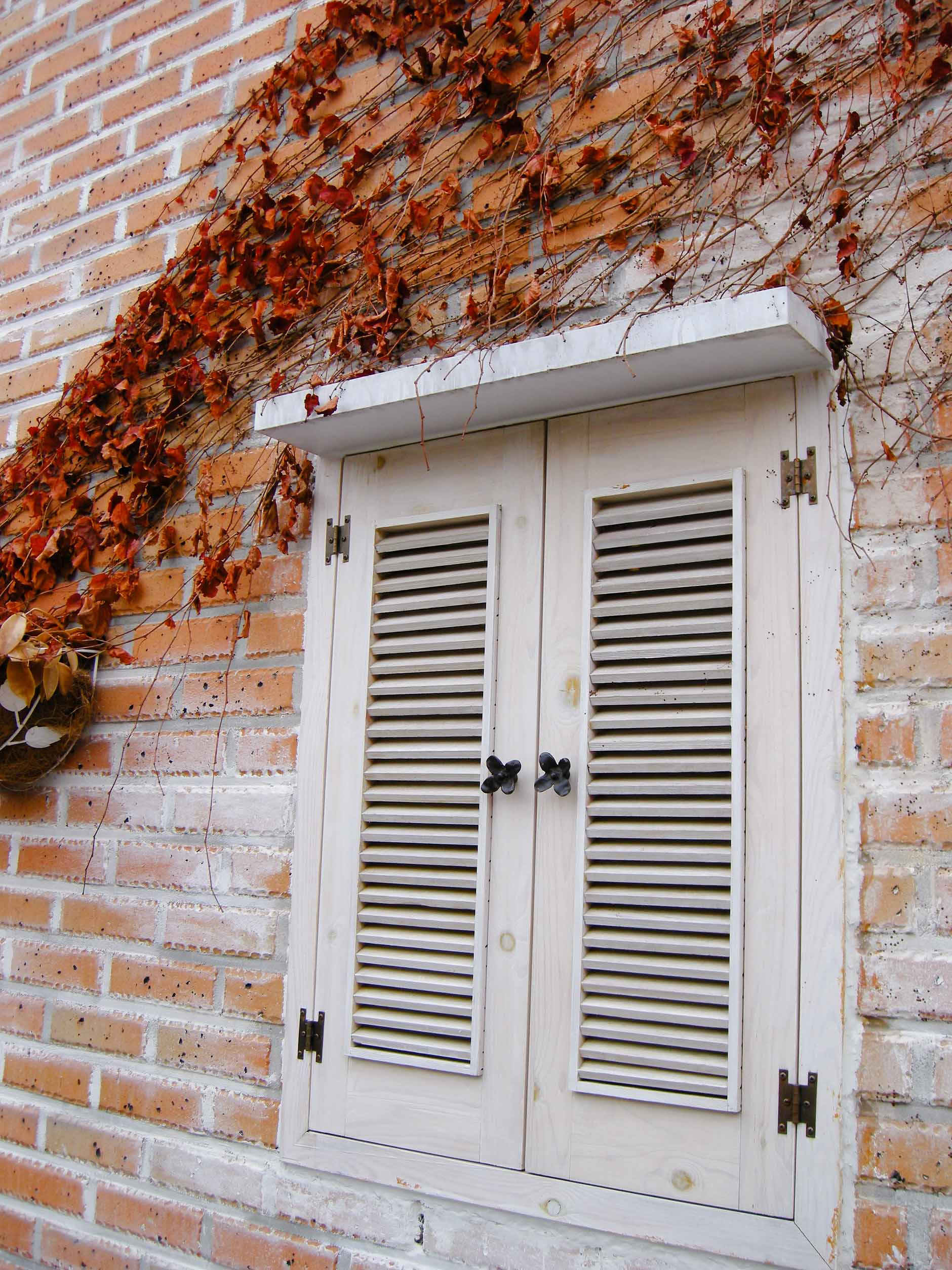
THE ORCHARD
HE ORCHARD cafe was another great cafe we discovered in town.
More modern in style, it was both an art space and a cafe all inside a minimalistic brick warehouse where you can stop and enjoy a break
as the owner’s Chow Chow walks around freely inside the cafe. Too adorable for words!
Getting to Jeonju
ARRIVING BY Train
From Seoul, take the train bound for Yongsan Station at City Hall Station. At Yongsan Station, you can take a train to Jeonju Station. The whole trip will take roughly 1 hour and 40 minutes.
ARRIVING BY BUS
From Seoul, you will need to take an express bus at the Central City Terminal. There are two options:
OPTION 1
Price: ₩16,000 – ₩17,000
Duration: 2HR 30MIN
The first express bus is called “센트럴-정안 고속버스(우등)” and will take you to Jeongan Service Area (To Suncheon) Express Bus Transfer Center.
At Jeongan Service Area (To Suncheon) Express Bus Transfer Center you will need to transfer to another express bus “정안-전주 고속버스(우등)” to Jeonju Express Bus Terminal.
OPTION 2
Price: around ₩26,100
Duration: 2HR 40MIN
This is the direct express bus called “센트럴-전주 고속버스(우등) ” and will head straight to Jeonju Express Bus Terminal.
ARRIVING BY Bus Shuttle
We were lucky enough to use the special Free Bus Shuttle promotion to travel to Jeonju during the Korea Grand Sale held every January. Check out the Korea Grand Sale website to see if there are any free shuttle bus tours available.
There is also an inexpensive foreigner exclusive Jeollabuk-do Shuttle Bus service available.
WHERE TO STAY
fter being unsuccessful in securing a traditional hanok for accommodation, we decided to stay at the Jeonju Tourist Hotel as it was conveniently located in the city area and easy to walk to the major tourist site seeing places.
If you want to experience sleeping the traditional way using an ondol (underfloor heating) they also have Korean-style guestrooms available but we opted for a western bedroom. The staff are super helpful and speak English as well should you have any questions.
The lowlights of our trip
lthough the sights that greeted us when walking through Jeonju’s picturesque Hanok Village were wonderful, there were also some unfortunate experiences during our trip:
- At the time of our visit, The Hanok Village was newly built and still under construction with many shop doors still shut and not opened for business. This is something to consider.
- Finding a person who can help guide you through the maze of buildings was very limited to just the souvenir stores. It’s very much a go-alone experience. The tourist centres were too far and not always opened.
- The advertised cultural activities were disappointing because we weren’t able to do ANY of them! They either didn’t exist anymore or were not available on the particular day we visited, even though websites online claimed otherwise.
- Even bigger places such as The Jeonju Korean Traditional Wine Museum didn’t have their advertised soju making program on the day we visited. No website reservations available only through the phone (Korean only – making things difficult!).
- We initially wanted to stay in a traditional hanok inside the village however we found it really hard to make a booking. This is something you definitely want to plan quite a bit in advance. It was also extremely difficult as for booking anything in Jeonju, there were no website reservations available only through the phone (Korean only).
- The handicraft workshop Kkotsugee Gongbang (숙이공방) where we heard you can make Korean paper dolls was no longer there and when we asked people where we could do Hanji making, the places they told us were Hanji souvenir shops that weren’t for classes.
- The Korean Lunar New Year was coming up which limited our exploration as many places were closed days leading up to the holiday.
Jeonju might have changed since the last time we’ve been or maybe it was because of the winter season, but we think if you want to have a more touristy experience book through a travel agency to be safe.
Jeonju Travel Tips
- A single day will suffice if you don’t plan on participating in any cultural activities (hanji making etc) or if they aren’t available.
- Make sure you write everything in Korean or have the address in Korean. As Jeonju is not a major city like Seoul you will find that the locals (especially taxi drivers) will not understand English/ English written Korean Hangul. Maps in both English and Korean will help you navigate around.
- If you think that Google Maps will help you find your way around South Korea as a non-speaker think again! It also uses full Korean Hangul so even though you type in your address in English Hangul, the street names will still be in full Hangul.
- When you are ready to go back to Seoul there are two bus terminals in Jeonju and only one of them goes to Seoul. Make sure you tell the taxi driver you want to go to Seoul so you aren’t in the wrong place.
- Grab a discount on hanbok rental using this special voucher from the Jeonju Hanok Village Hanboknam Store
- Grab a ticket discount on entry to the Korean Folk Village in Seoul
- Get unlimited WiFi access in South Korea for only AUD$3.55 per day
Need a place to stay in Jeonju? Use our handy widget to find the perfect accommodation:
- Experience all the winter delights at South Korea’s biggest theme park, Everland
- Feel the magic of Seoul’s version of Disneyland, Lotte World
Updated 12 May 2020




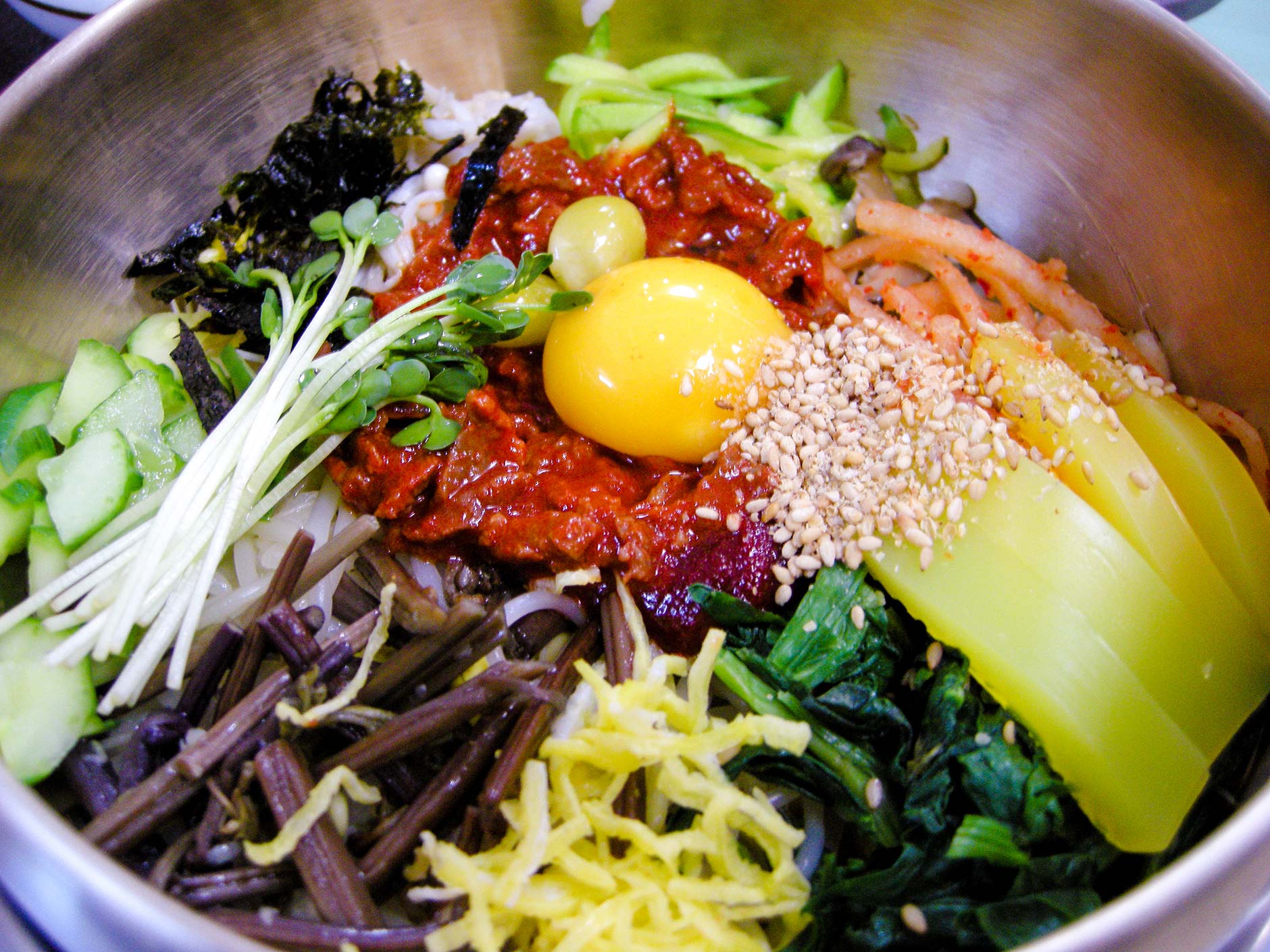
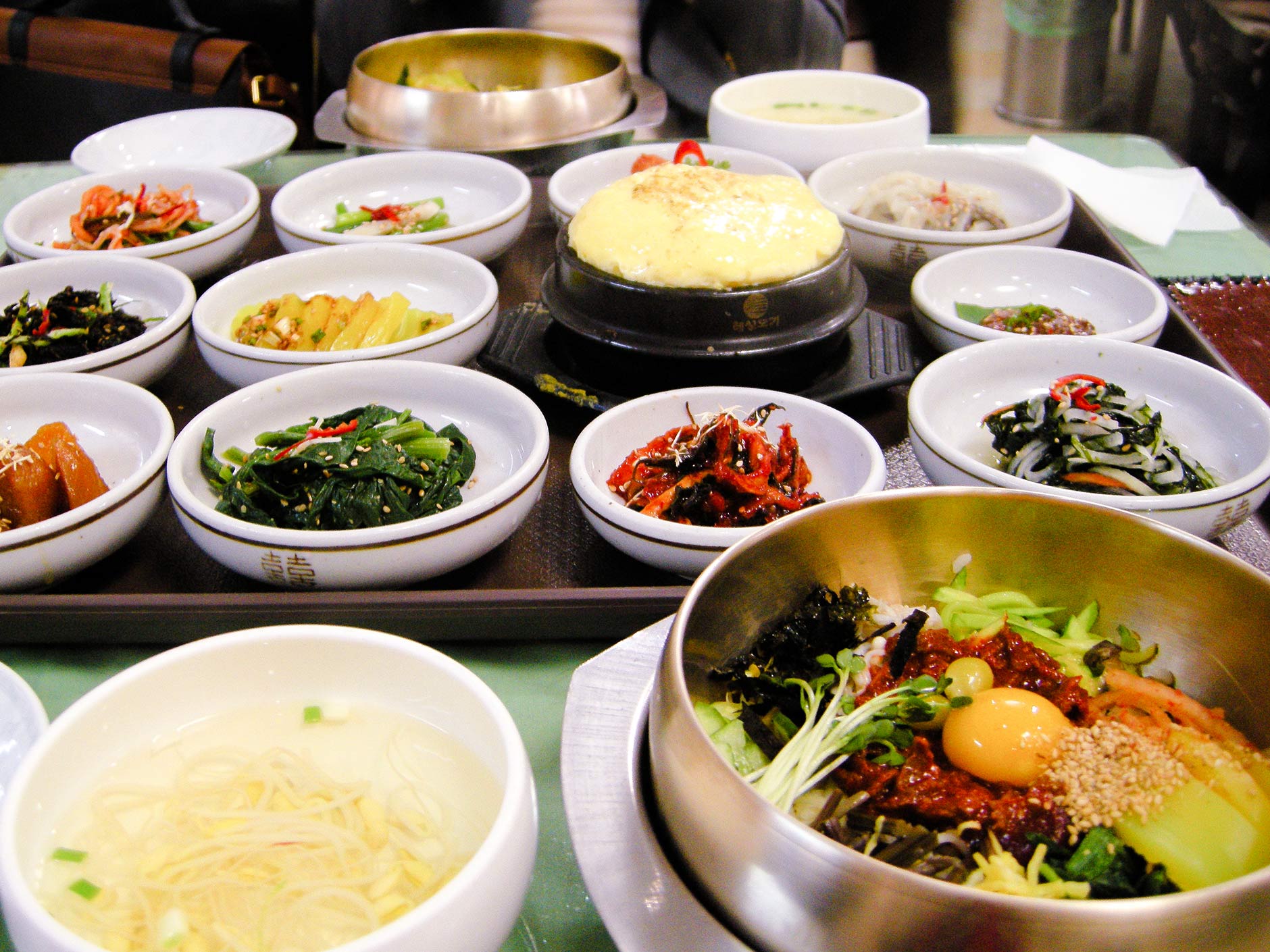
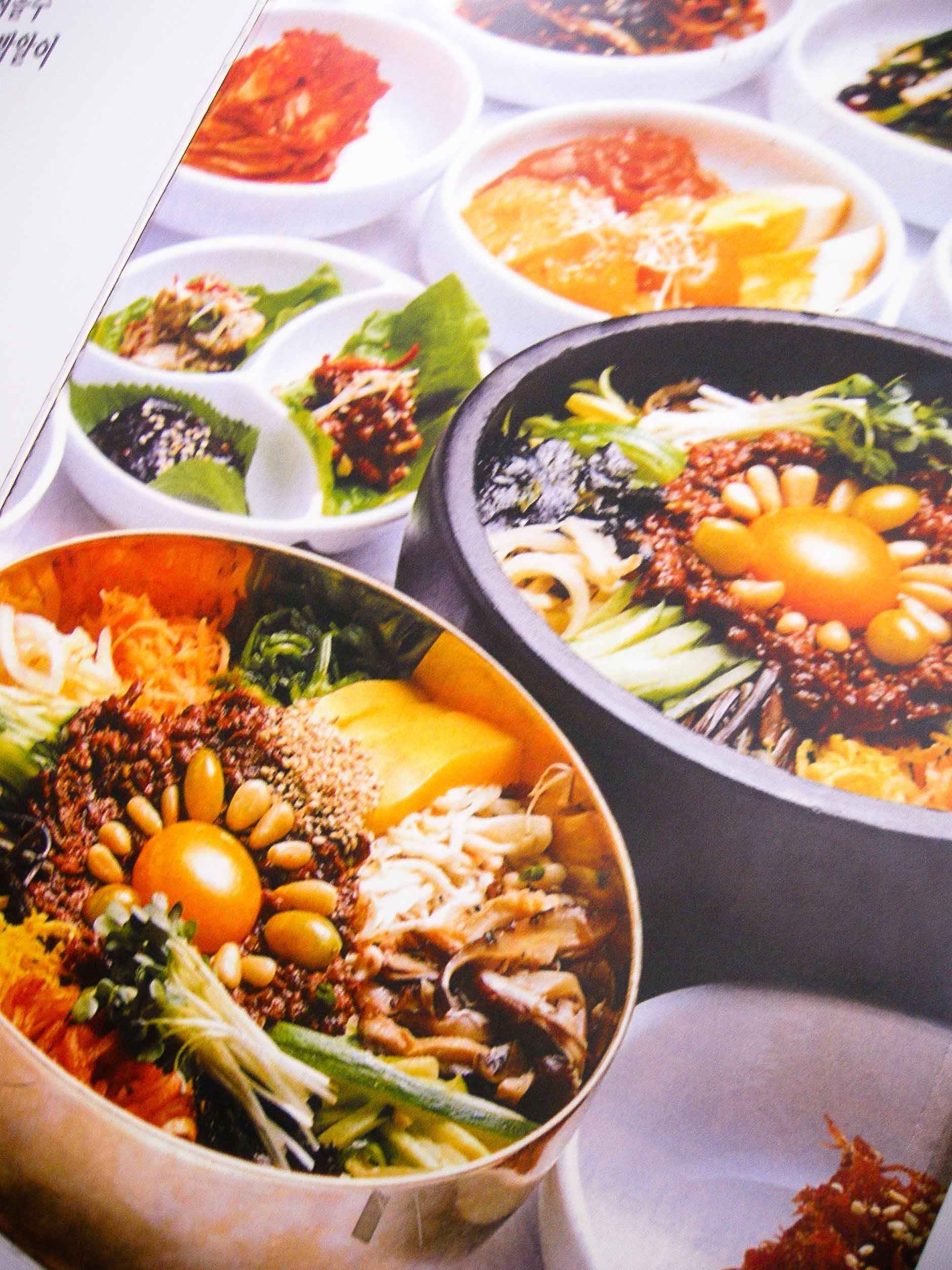
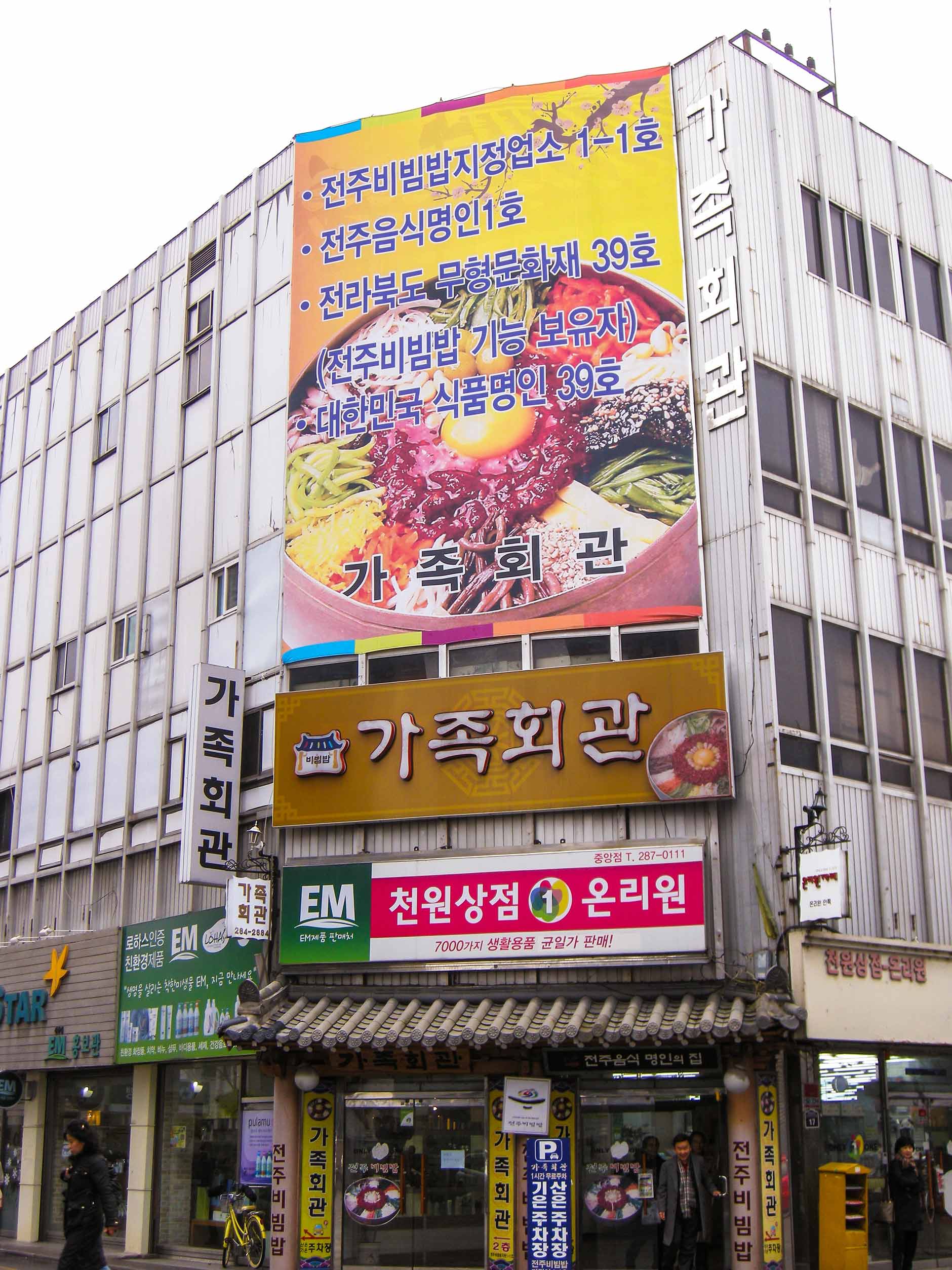
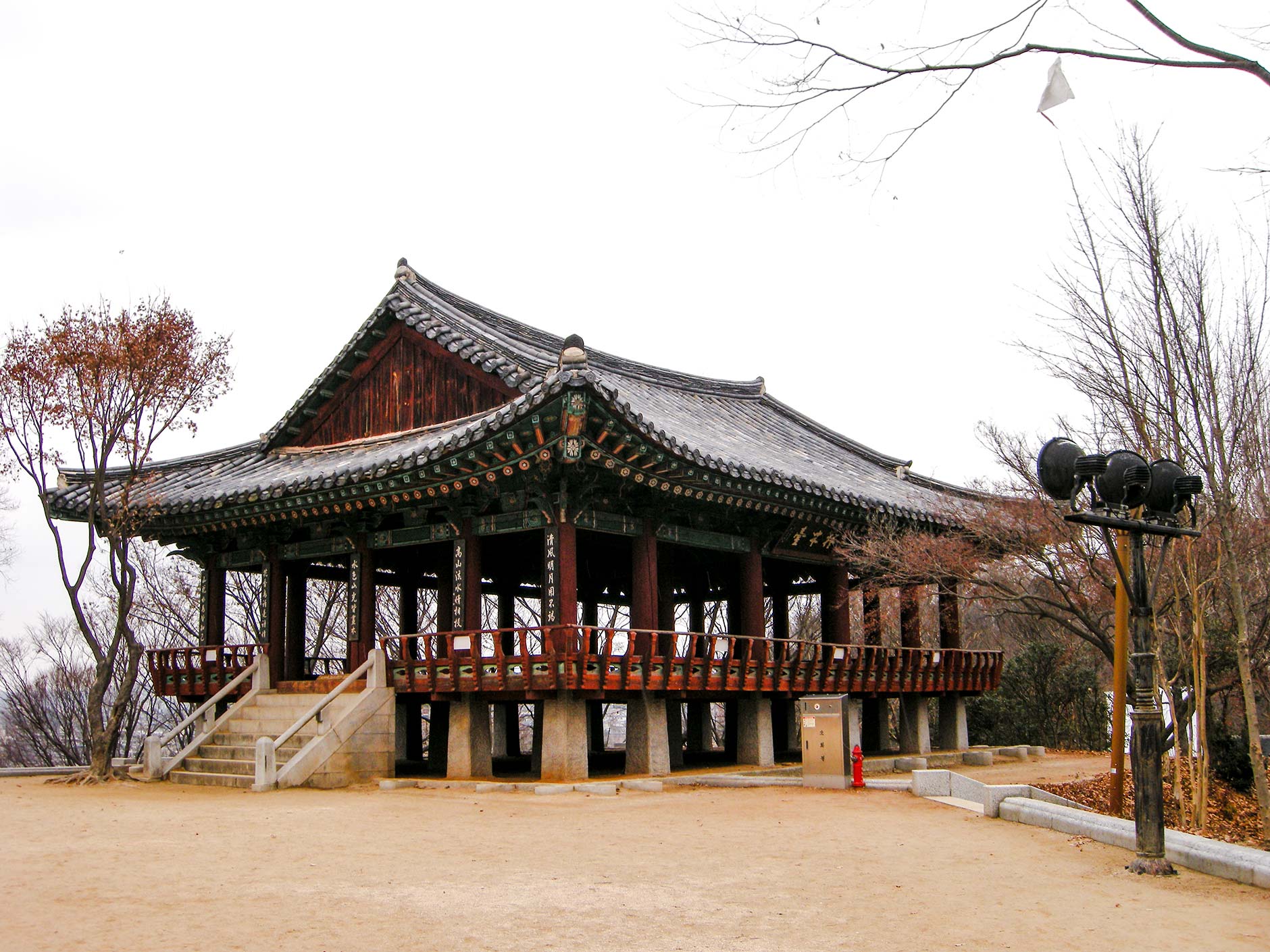

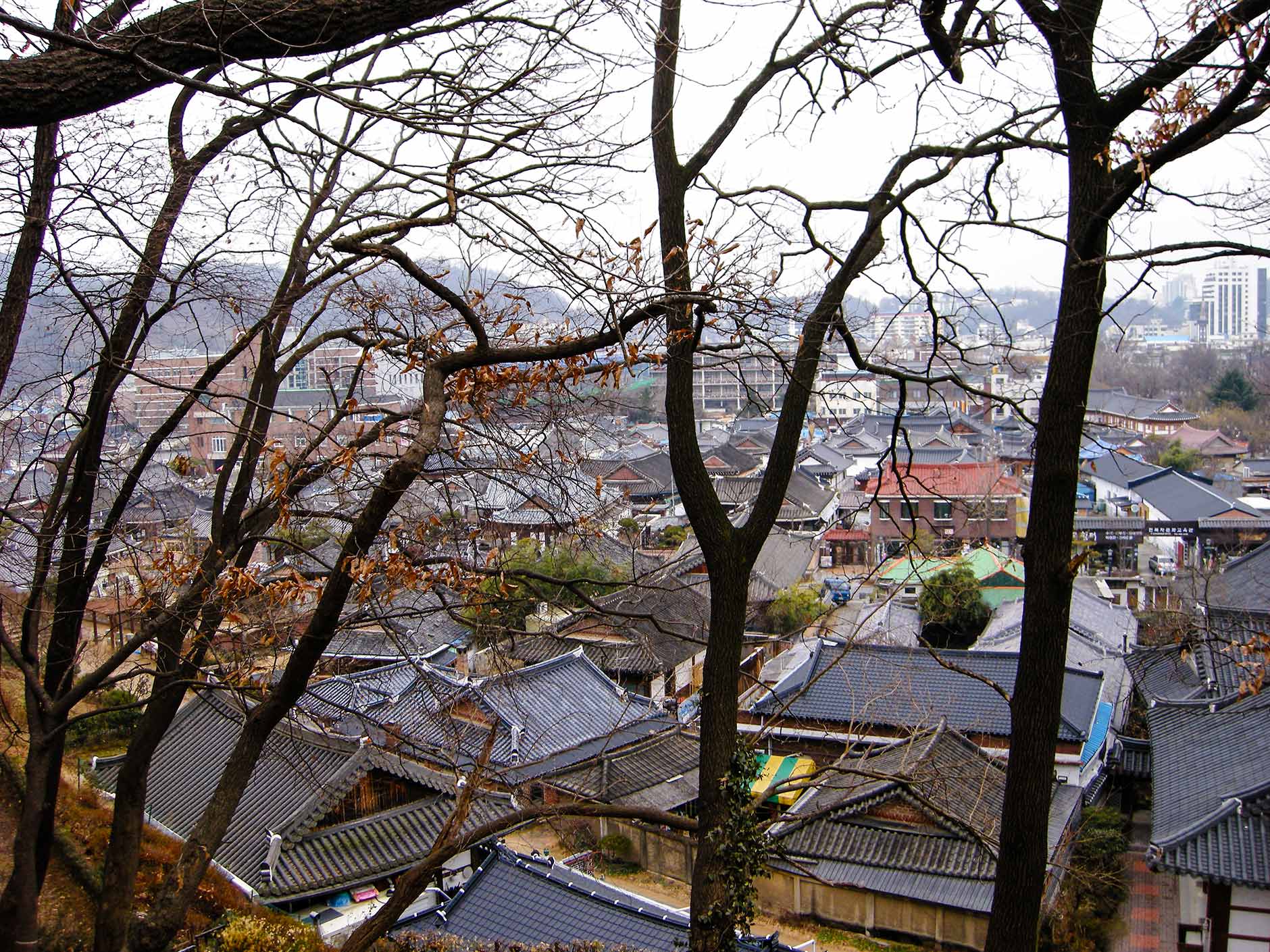

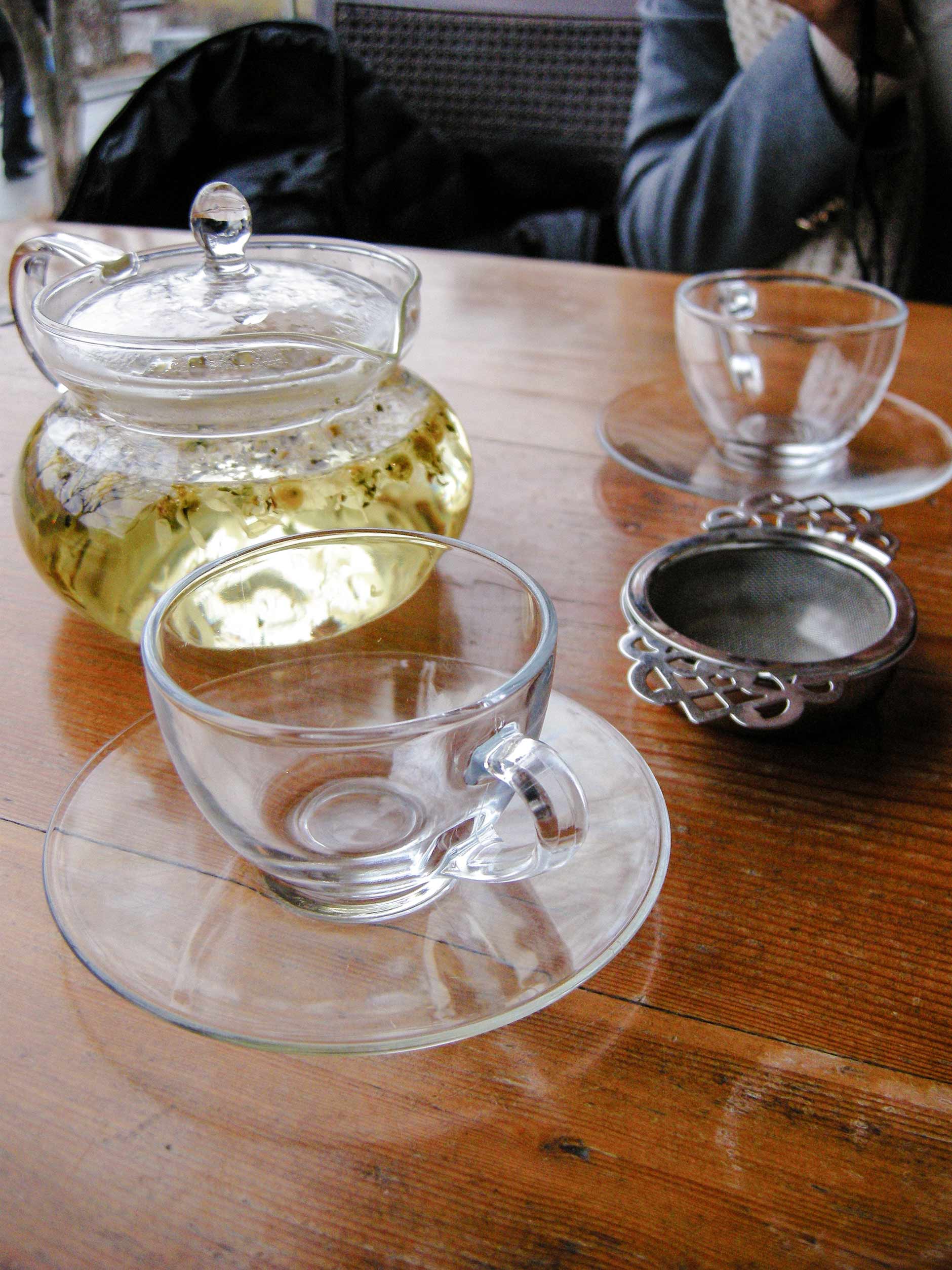

Hello…was browsing and happen to.saq your blog.
I am very interested on the bibimap however can I check if there is beef? Beside beef they got pork?
Thanks
Hi Isabella
Unfortunately I don’t remember if they have beef or pork choices since neither of us can read/speak Korean. Also we visited this place a year ago so our memory of the menu is not so good but if you have a korean friend or someone who knows how to read korea the photo of the menu on the wall next to the receipt photo will be able to show you what choices they have.
Since they get a lot of foreign visitors they assumed or just ask if we wanted their famous bibimbap and if we would like Gochujang with it which is the korean red hot chilli paste.
I hope that helped in some small way!
Xx
Siree
[…] Visit the home of Korea’s beloved food Bibimbap, Jeonju […]